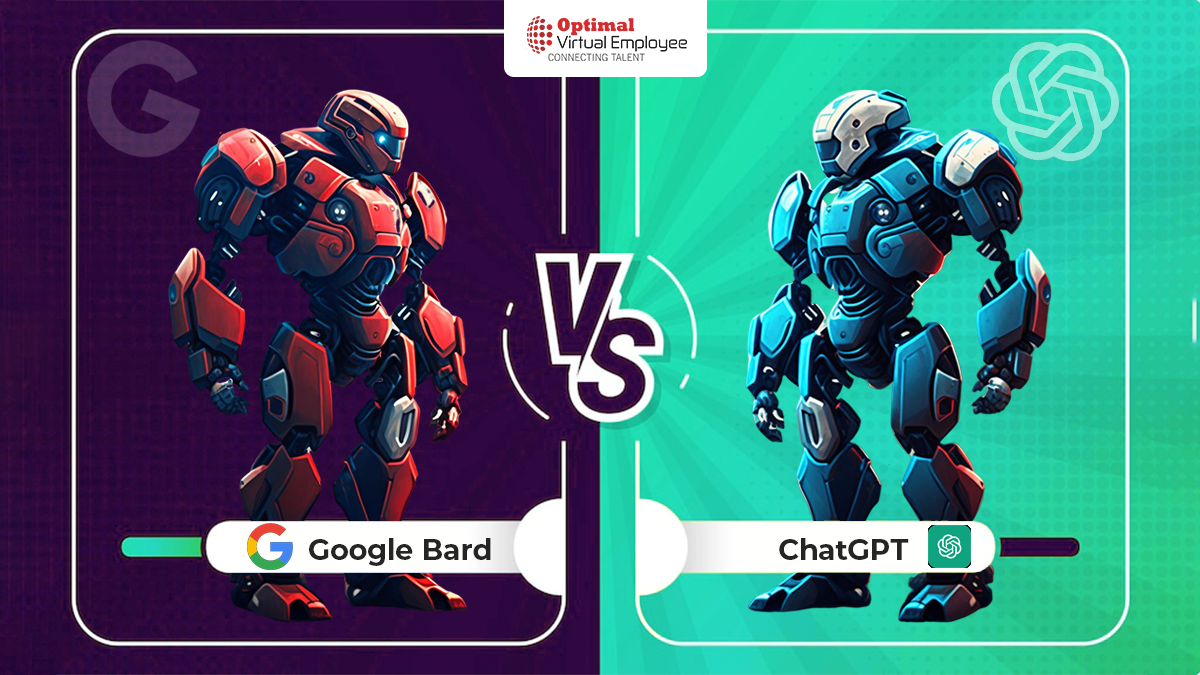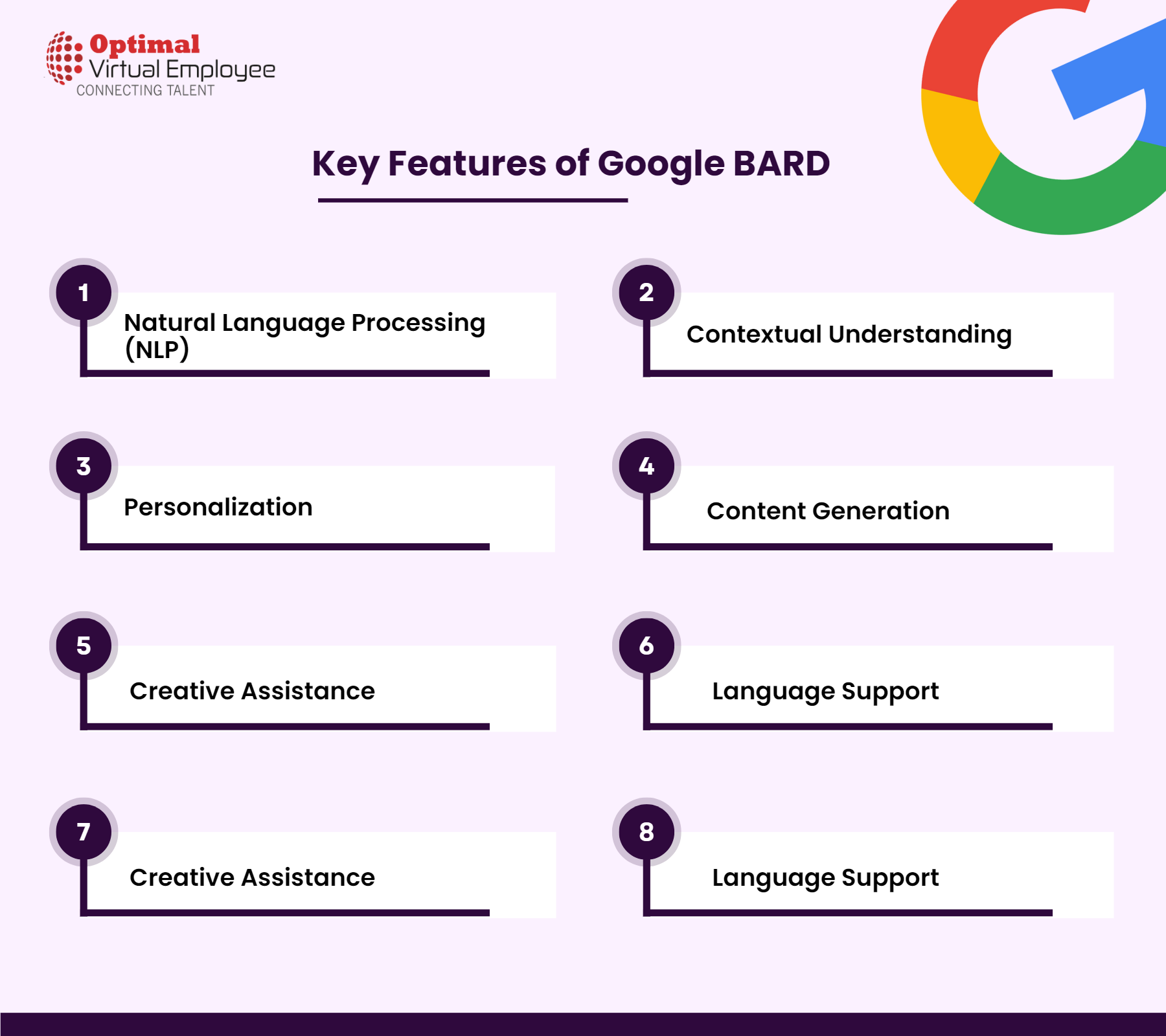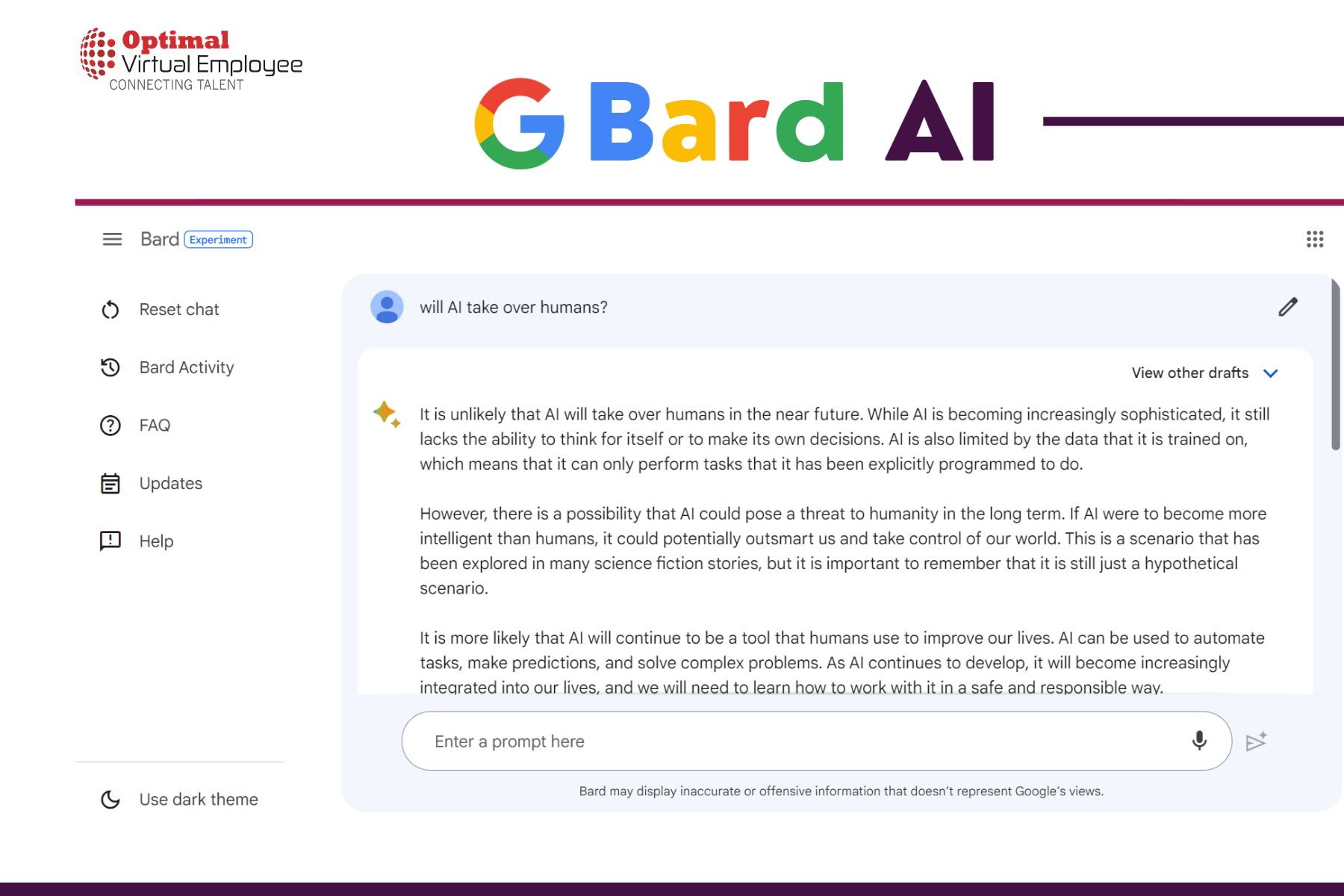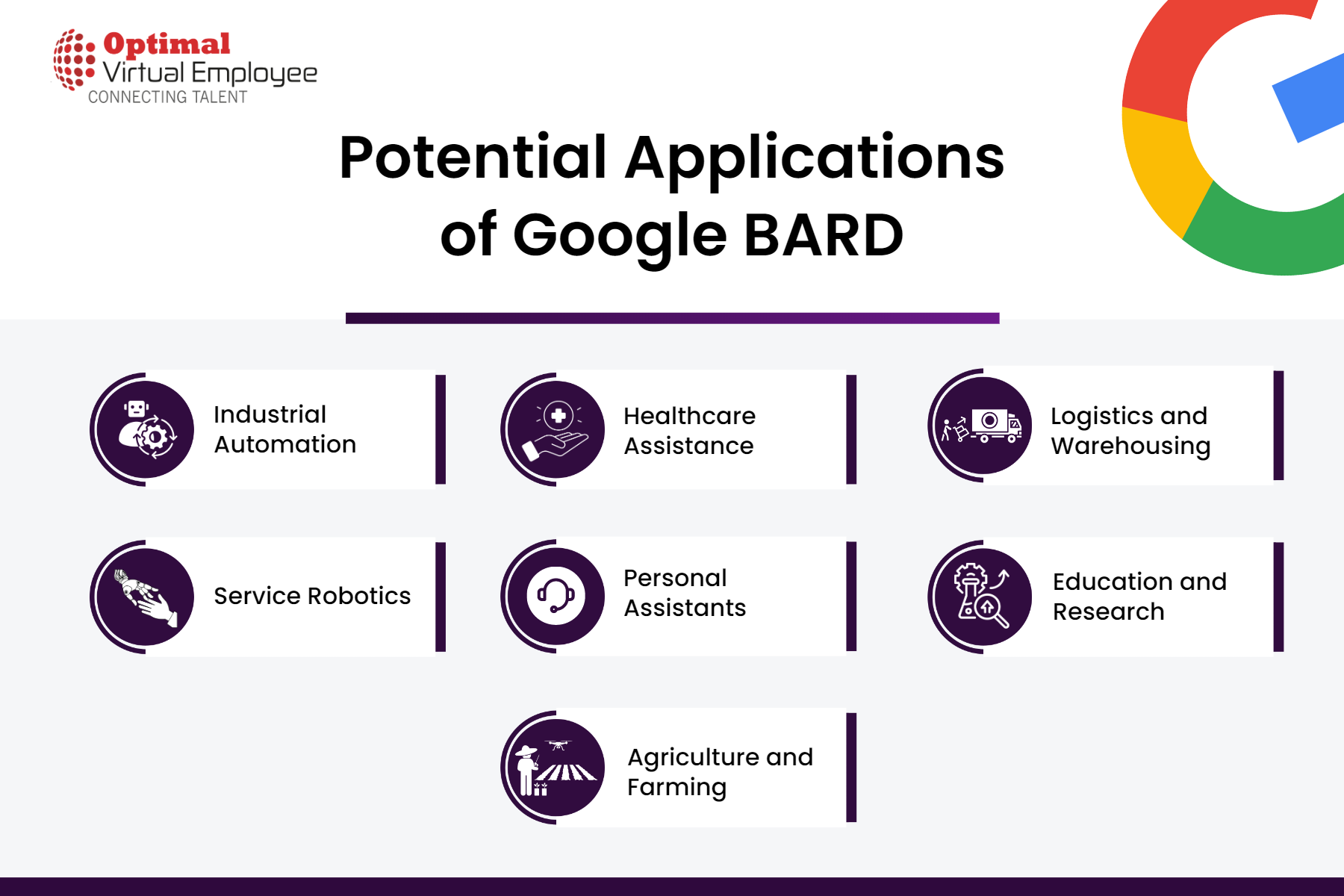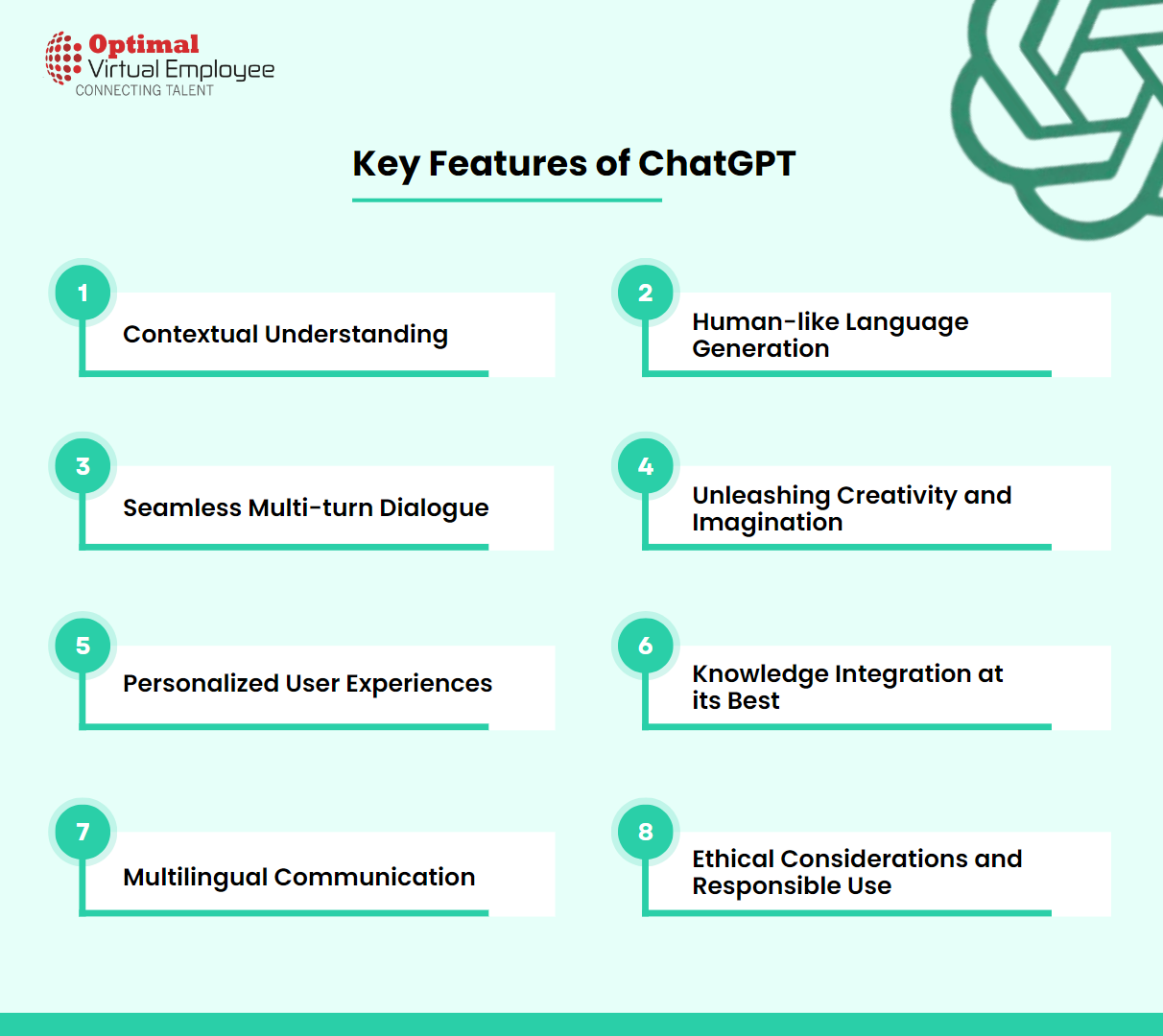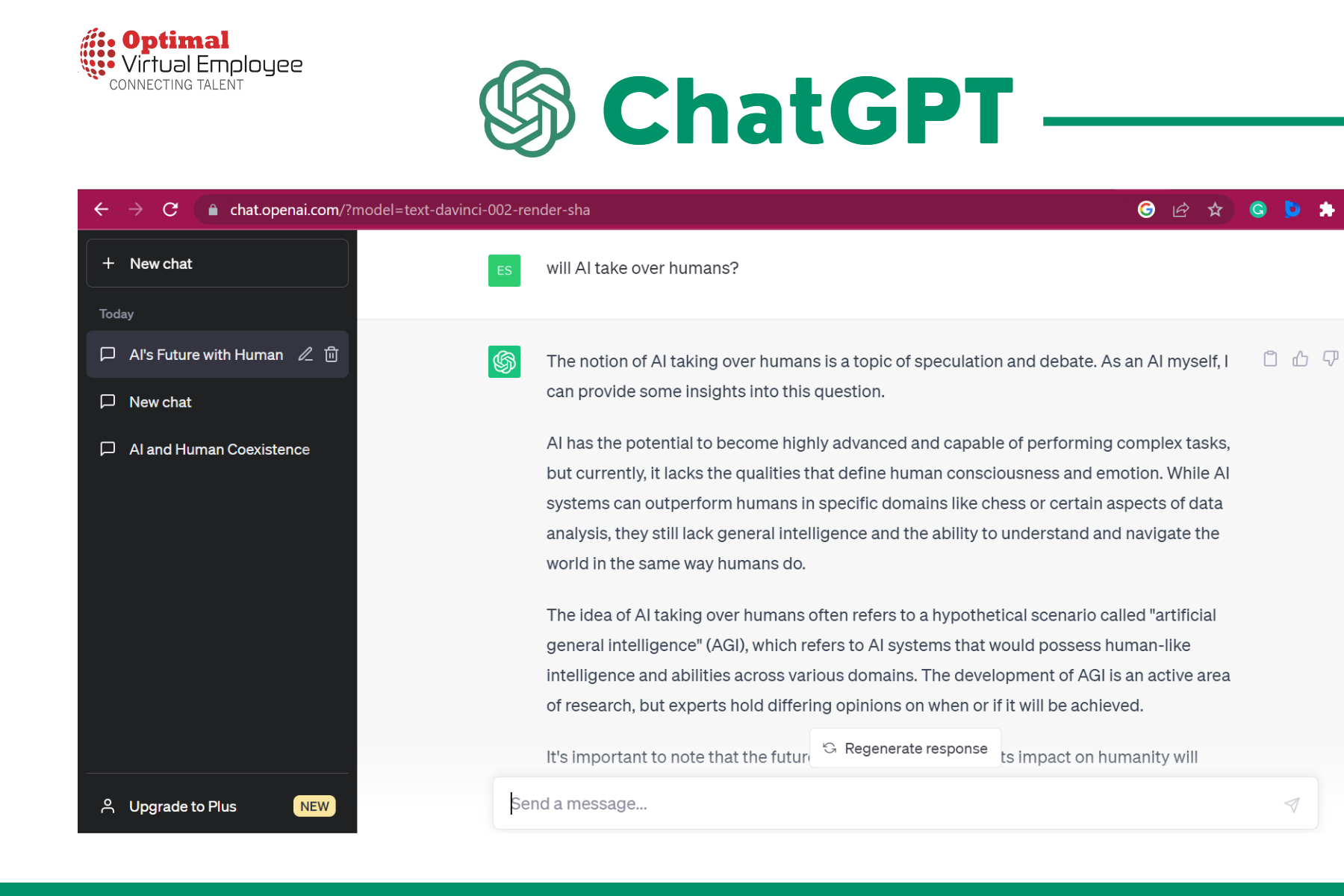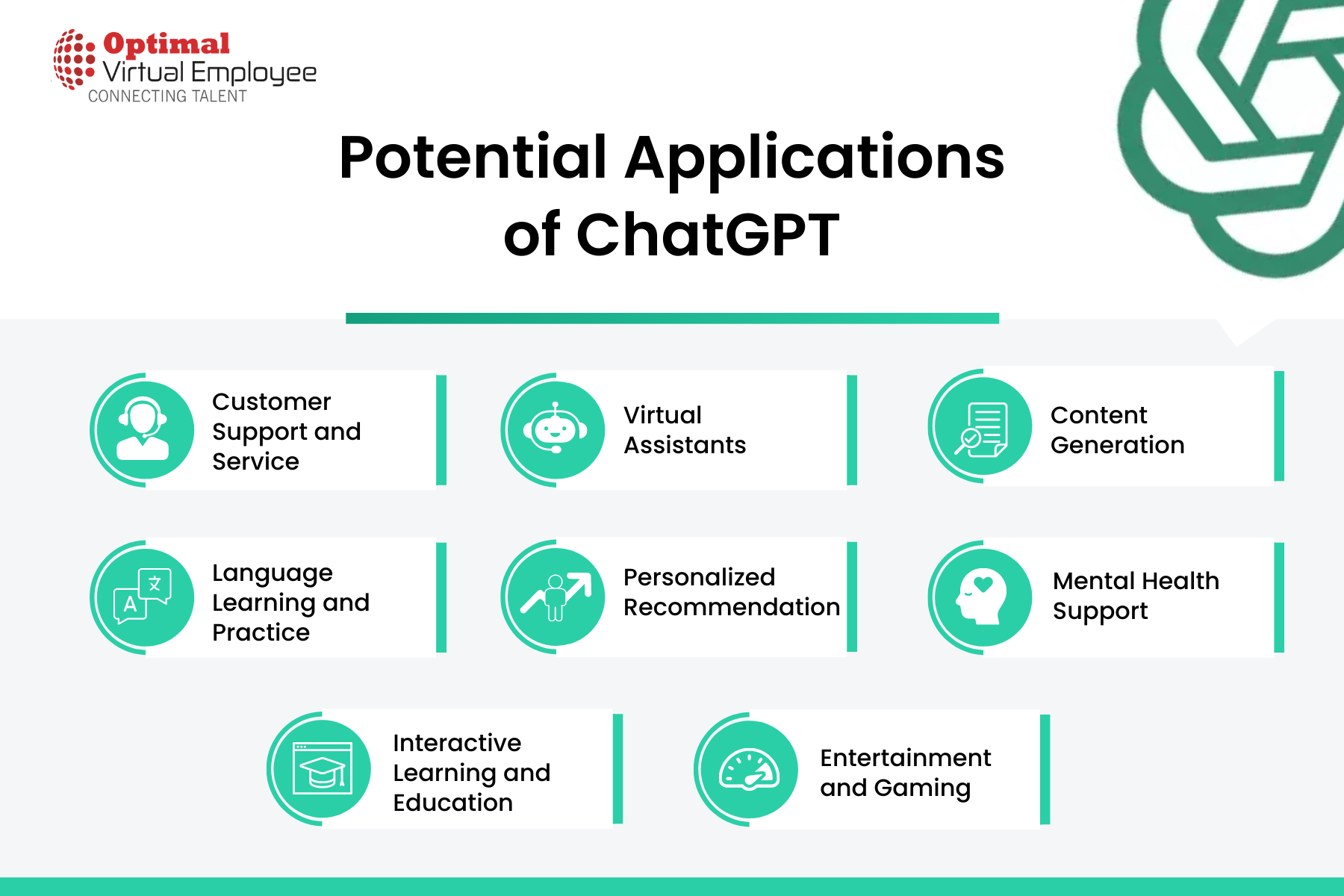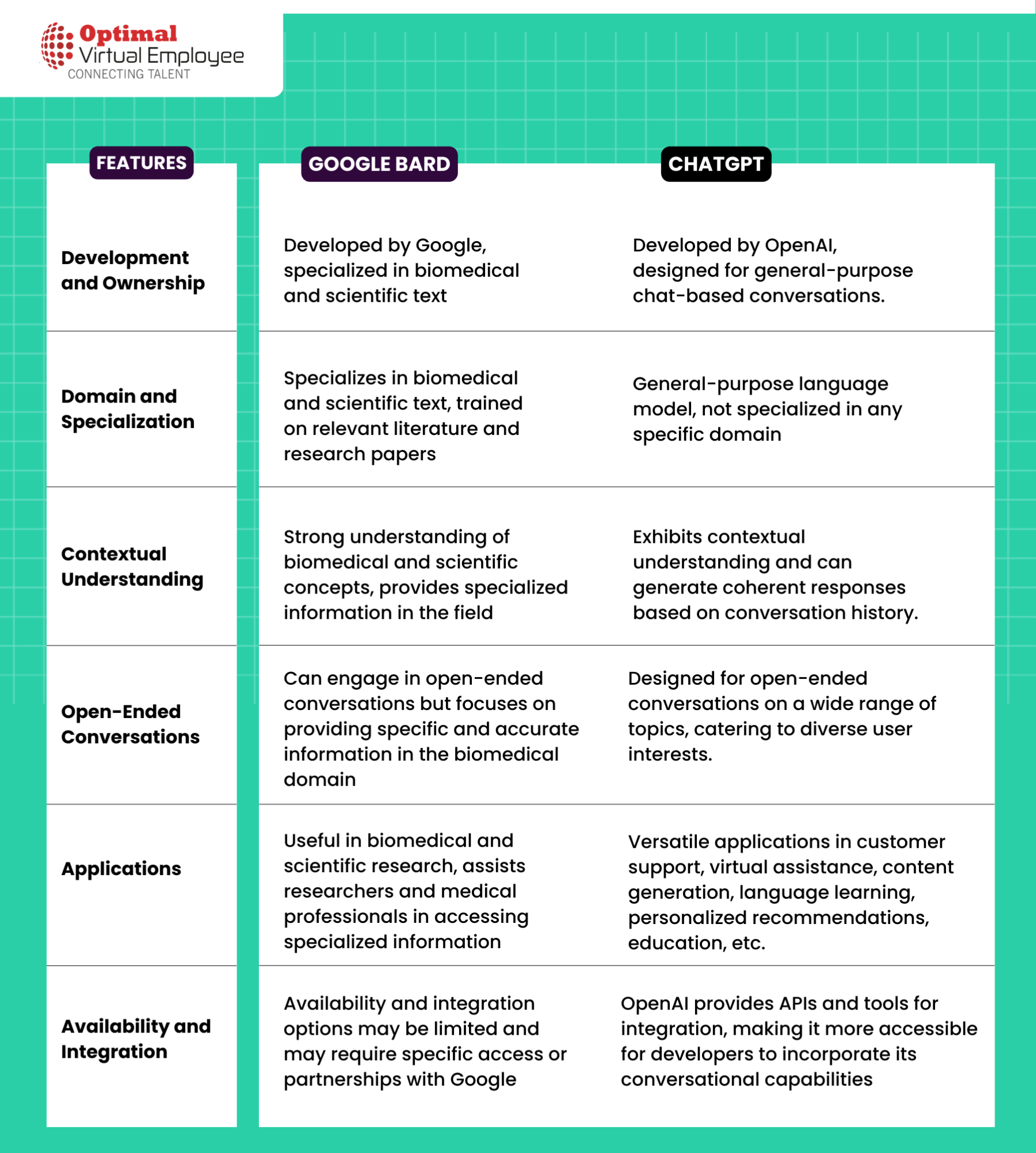In the dynamic realm of business, where customer engagement and brand differentiation hold the keys to success, content creation has emerged as a pivotal force for companies across industries. Today, the digital landscape demands a fresh approach to captivate audiences and cut through the noise. As CXOs, you understand the importance of staying ahead of the curve and harnessing the latest innovations to propel your organization forward. In this pursuit, the emergence of game-changing technologies like Google Bard and ChatGPT has revolutionized the content creation industry, providing you with a powerful arsenal to navigate the new age of marketing.
In this blog, we will embark on a transformative journey into the world of content creation, exploring how Google Bard and ChatGPT are reshaping the industry landscape. We will delve into the intricacies of these cutting-edge tools, unveiling the extraordinary potential they hold for CXOs seeking to deliver captivating and personalized experiences for their target audience. Prepare to discover how these AI-driven advancements can elevate your content strategy, drive engagement, and help you lead your company to new heights of success.
Prepare to be captivated by the incredible potential of Google Bard, a groundbreaking tool developed by the tech titan, Google. Inspired by the timeless art of poetry, this AI marvel embodies the spirit of ancient bards, empowering creators to weave intricate narratives, craft mesmerizing verses, and conjure up worlds beyond imagination. Through the wizardry of machine learning, Google Bard has emerged as a muse to countless artists, empowering them to breathe life into their creations like never before.
But that’s not all! Our adventure doesn’t stop there. We’ll journey deeper into the labyrinth of AI marvels, uncovering the extraordinary capabilities of ChatGPT, an exceptional language model that has become a game-changer in the field of conversation. ChatGPT is an enchanting entity, an AI companion that converses effortlessly, blurring the lines between human and machine interactions. Prepare to be astonished as we explore how ChatGPT, armed with a wealth of knowledge and impeccable linguistic prowess, has sparked a revolution in content creation and revolutionized the way we communicate.
Embark on this extraordinary expedition with us as we delve into the fascinating world of New Age Content Creation, where Google Bard and ChatGPT dance together, redefining the industry and captivating the hearts and minds of creators and audiences alike. Together, we’ll unlock the doors to a limitless future where imagination merges seamlessly with technology, giving rise to an era where creativity knows no bounds. Are you ready to embrace this transformative journey? The adventure awaits!
Understanding Google BARD
Google BARD, an acronym for Behavior-Agnostic Robot Design, represents an innovative research project developed by Google. It is a pioneering approach to automating the design process of robots using reinforcement learning techniques. By enabling robots to learn tasks without explicit programming and adapt to diverse environments, Google BARD is poised to revolutionize the field of robotics.
At its core, Google BARD focuses on leveraging reinforcement learning, an AI technique that allows robots to learn and improve their performance through interactions with their environment. Rather than relying on explicitly programmed instructions, BARD empowers robots to autonomously learn and adapt their behaviours based on trial and error. This behaviour-agnostic approach aims to create robots capable of generalized performance across various tasks and scenarios.
Key Features of Google BARD
Google BARD (Behavior-Agnostic Robot Design) is a research project that introduces several noteworthy features to enhance the capabilities of robots. These features contribute to the adaptability, learning, and generalization of robotic systems. Here are some key features of Google BARD:
Reinforcement Learning: Google BARD utilizes reinforcement learning techniques to enable robots to learn and improve their performance through interactions with their environment. This approach allows robots to receive feedback or rewards based on their actions and adjust their behaviour accordingly, leading to more effective task completion over time.
Behaviour-Agnostic Approach: BARD focuses on creating behaviour-agnostic robots, meaning they are not pre-programmed for specific tasks. Instead, the robots learn tasks without explicit instructions and adapt their behaviours based on the desired outcomes and feedback received, leading to greater flexibility and versatility.
Task Adaptation: One of the key features of Google BARD is its ability to facilitate task adaptation. Robots trained using BARD can apply their learned behaviours to new scenarios or tasks, reducing the need for manual reprogramming. This adaptability allows robots to handle a wider range of tasks and environments without significant reconfiguration or retraining.
Scalability: BARD considers scalability as a crucial aspect. The project aims to create models and algorithms that can be applied to different robotic systems, ensuring that the benefits of BARD can be extended to a variety of industries and use cases. This scalability allows for wider adoption and integration of BARD techniques into existing robotic platforms.
Versatility in Environments: Google BARD focuses on developing robots that can adapt to diverse environments. The learned behaviours of BARD-trained robots can be applied in different settings, allowing them to operate efficiently in various real-world scenarios, such as manufacturing facilities, healthcare settings, or warehouse environments
Rapid Deployment: With BARD, the deployment process for robots becomes more streamlined. The adaptability and generalization features enable robots to quickly learn and adapt to new tasks or environments, reducing the time and effort required for manual programming and customization. This rapid deployment potential can lead to increased efficiency and cost-effectiveness in implementing robotic systems.
Key Capabilities of Google BARD
Google BARD (Behavior-Agnostic Robot Design) possesses several key capabilities that make it a pioneering approach in the field of robotics. These capabilities empower robots to learn, adapt, and perform tasks with a high level of efficiency and versatility.
Google BARD leverages reinforcement learning algorithms to enable robots to learn tasks through trial and error. By receiving feedback or rewards based on their actions, robots can iteratively improve their performance and optimize their behaviours for various tasks. BARD enables robots to adapt their learned behaviours to new scenarios or tasks.
Rather than being limited to specific pre-programmed instructions, BARD-trained robots have the ability to generalize their knowledge and apply it to different situations. Furthermore, One of the significant capabilities of Google BARD is its focus on creating generalized robot designs. Instead of training robots for specific tasks individually, BARD aims to develop models that can learn and generalize knowledge across multiple tasks.
It is to be noted that BARD facilitates autonomous learning in robots, reducing the dependency on extensive human intervention. Robots trained with BARD can explore their environment, learn from interactions, and improve their performance over time without continuous human supervision. BARD takes a behaviour-agnostic approach, meaning robots are not explicitly programmed for specific tasks. Instead, they learn behaviours without task-specific instructions, allowing for flexibility and adaptability across various tasks and scenarios.
Potential Applications of Google BARD
The applications of Google BARD are vast and span multiple industries. Here are a few potential areas where BARD can make a significant impact:
Limitations/ Challenges
While Google BARD (Behavior-Agnostic Robot Design) shows promising potential, there are several limitations and challenges that need to be considered. Here are some key limitations and challenges of Google BARD:
Sample Efficiency: Reinforcement learning algorithms, which form the basis of Google BARD, often require a large number of interactions with the environment to learn effectively. This high sample complexity can be time-consuming and resource-intensive, limiting the speed of learning and real-world deployment.
Safety and Robustness: Ensuring the safety and robustness of BARD-trained robots is a critical challenge. Robots need to exhibit safe behaviours and handle unexpected situations appropriately. The potential for errors or incorrect actions during the learning process and the need to address safety concerns when deploying autonomous robots in real-world environments require careful attention.
Ethics and Value Alignment: As robots trained with BARD learn autonomously, there is a need to ensure that their learned behaviours align with ethical considerations and human values. Addressing issues such as bias, fairness, and the avoidance of harmful actions is essential to develop responsible and trustworthy robotic systems.
User Interface and Interaction Design: Designing intuitive and user-friendly interfaces for humans to interact and collaborate with BARD-trained robots can be a complex task. Ensuring effective communication, understanding user intent, and enabling seamless human-robot collaboration are important considerations for the successful adoption and acceptance of BARD-powered robots.
Ethical Considerations and Policy Frameworks: As BARD and similar technologies advance, there is a need to establish clear ethical guidelines, legal frameworks, and policies regarding the deployment and use of robots in various contexts. Addressing concerns around privacy, liability, accountability, and job displacement requires careful deliberation and proactive policy development.
Understanding ChatGPT
ChatGPT is an advanced language model developed by OpenAI that specializes in engaging in dynamic and interactive conversations with users. It is built upon the GPT (Generative Pre-trained Transformer) architecture, which has been fine-tuned specifically for chat-based applications. ChatGPT has gained attention for its impressive ability to generate human-like responses and engage in meaningful conversations.
ChatGPT utilizes natural language generation techniques to produce coherent and contextually relevant responses. Through its training, it has learned patterns, grammar, and semantics from extensive text data, enabling it to generate human-like text that can mimic conversational interactions.
Like its predecessor, GPT, ChatGPT follows a two-step process: pre-training and fine-tuning. During pre-training, the model is exposed to a large corpus of publicly available text data from the internet. This step helps the model learn grammar, facts, reasoning abilities, and some level of common sense knowledge. Fine-tuning is the subsequent step, where the model is trained on more specific datasets, and carefully generated with the help of human reviewers to refine its responses and ensure appropriateness.
Key Features of ChatGPT
ChatGPT, developed by OpenAI, possesses several key features that contribute to its effectiveness in engaging in chat-based conversations. These features enhance its ability to generate contextually relevant and coherent responses. Here are some of the key features of ChatGPT:
Natural Language Generation: ChatGPT utilizes natural language generation techniques to produce human-like responses. It has been trained on a vast amount of text data, enabling it to generate coherent and contextually appropriate text in response to user input.
Contextual Understanding: ChatGPT excels at understanding the context of the ongoing conversation. It takes into account preceding messages to maintain coherence and relevance in its responses. By considering the conversation’s history, ChatGPT can provide more meaningful and context-aware replies.
Open-Ended Conversations: ChatGPT is designed to engage in open-ended conversations, allowing users to explore various topics and have extended interactions. It can sustain back-and-forth exchanges, responding to user queries, statements, or prompts in a conversational manner.
Politeness and Sensitivity: OpenAI has incorporated specific guidelines and training to ensure that ChatGPT generates polite and sensitive responses. The model aims to avoid inappropriate, offensive, or harmful content, promoting positive and respectful interactions.
Multi-Turn Dialogue Support: ChatGPT is capable of handling multi-turn dialogues, which means it can maintain context and coherence across multiple exchanges. This allows for more dynamic and interactive conversations, where users can build upon previous messages and ChatGPT can provide relevant responses based on the conversation’s flow.
User-Specific Prompts: ChatGPT allows users to provide specific prompts or instructions to guide the conversation. By giving explicit prompts, users can direct the conversation toward a specific topic or request a particular kind of response from ChatGPT.
Key Capabilities of ChatGPT
ChatGPT possesses several key capabilities that enable it to engage in meaningful and interactive conversations with users. These capabilities enhance its effectiveness in generating contextually relevant and coherent responses.
One of the primary capabilities of ChatGPT is its natural language understanding. It can comprehend and interpret user queries, statements, and prompts in natural language. By understanding the intent behind user input, ChatGPT can process and analyze the information to generate appropriate responses. This capability allows for more effective communication between the user and the model.
ChatGPT also excels at maintaining context within a conversation. It takes into account preceding messages and user interactions, allowing it to generate contextually relevant responses. By considering the conversation history, ChatGPT can produce replies that align with the ongoing discussion and user intent. This capability enables more coherent and flowing conversations, enhancing the user experience.
In addition to context awareness, ChatGPT demonstrates the ability to generate coherent and contextually appropriate responses. It leverages natural language generation techniques to produce human-like text that is grammatically correct and coherent. By incorporating information from the conversation history, ChatGPT ensures that its responses are coherent and aligned with the overall context of the conversation.
Another key capability of ChatGPT is its open-ended dialogue support. It is designed to engage in open-ended conversations, allowing users to explore various topics and have extended interactions. ChatGPT can sustain back-and-forth exchanges, responding to user input in a conversational manner.
Furthermore, ChatGPT is capable of handling ambiguity and seeking clarification. When faced with unclear or ambiguous user input, ChatGPT can ask follow-up questions or request additional information to better understand user intent. This capability helps to improve the accuracy and relevance of its responses, ensuring a more effective communication process.
Lastly, ChatGPT is trained to generate responses that are polite, respectful, and sensitive. It aims to avoid offensive or harmful content, promoting positive and inclusive interactions with users. This capability enables ChatGPT to generate responses that adhere to social norms and cultural sensitivities, creating a safe and respectful conversational environment.
Potential Applications of ChatGPT
ChatGPT, with its conversational capabilities, can be applied in various domains and industries to enhance user interactions, provide personalized assistance, and improve customer experiences. Here are some potential applications of ChatGPT:
Limitations/Challenges
While ChatGPT exhibits impressive capabilities, it also has certain limitations and challenges that are important to consider. Here are some of the key limitations of ChatGPT:
Lack of Factual Accuracy: ChatGPT’s responses are based on patterns and associations learned from its training data, which may include inaccuracies or biases. It does not possess real-time knowledge or access to up-to-date information.
Sensitivity to Input Phrasing: ChatGPT can be sensitive to the phrasing of user prompts, sometimes generating different responses based on slight variations in input. Users may need to experiment with different phrasings or rephrase their queries to obtain the desired response, which can impact the user experience.
Difficulty Handling Uncommon or Ambiguous Prompts: ChatGPT may struggle with understanding and generating responses to uncommon or ambiguous prompts. It tends to perform better with more common and well-defined topics.
Potential to Generate Incorrect or Misleading Information: Due to its training on large amounts of data, ChatGPT may generate responses that are incorrect, speculative, or misleading. It is important to exercise critical judgment and verify information from reliable sources before considering it accurate.
Inability to Reason or Think Abstractly: ChatGPT lacks true understanding and reasoning abilities. It does not possess a deep understanding of concepts, cannot perform logical deductions, and cannot think abstractly.
Feature Comparison Between Google Bard And ChatGPT
Bottom Line
In the era of new-age content creation, Google BARD and ChatGPT have emerged as transformative tools that are reshaping the content landscape. These AI-powered conversational agents offer unprecedented capabilities to generate engaging and personalized content, revolutionizing the way creators and businesses connect with their audiences. By harnessing the power of natural language processing and machine learning, BARD and ChatGPT provide efficient content generation, enhanced user experiences, and valuable insights.
The introduction of Google BARD and ChatGPT has brought about a paradigm shift in content creation. Their ability to understand context, generate coherent responses, and adapt to user preferences has drastically improved the efficiency and effectiveness of content generation. These tools offer a wide range of applications across industries, including social media, customer support, content marketing, and more.
Furthermore, the integration of BARD and ChatGPT into content creation workflows has accelerated the production process while maintaining high quality and reducing the burden on human creators. The collaboration between humans and AI has fostered a creative synergy, allowing for the exploration of innovative ideas, new content formats, and personalized experiences.
However, as with any transformative technology, there are considerations that need to be addressed. Ethical concerns, including bias, privacy, and the responsible use of AI, must be carefully navigated to ensure the ethical and responsible deployment of BARD and ChatGPT. Transparency, explainability, and the development of robust guidelines and policies are crucial to building trust and mitigating potential risks.
Looking ahead, the future of content creation lies in the continuous advancements and refinement of AI-powered conversational agents. Ongoing research and development will lead to even more sophisticated models capable of understanding complex nuances, generating diverse content types, and collaborating seamlessly with human creators. The industry will witness a dynamic evolution, with content creators and businesses leveraging the power of BARD, ChatGPT, and future iterations to engage, captivate, and provide value to their audiences.
In conclusion, Google BARD and ChatGPT are driving a transformative shift in content creation, empowering creators with powerful AI tools that augment their abilities and expand creative possibilities. With their potential to generate personalized and high-quality content at scale, these tools are revolutionizing the industry, enabling content creators and businesses to thrive in the new age of content creation. Embracing these advancements while being mindful of ethical considerations will shape a future where AI and human creativity coexist, enriching the content landscape in unprecedented ways.
